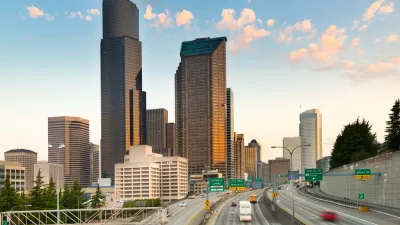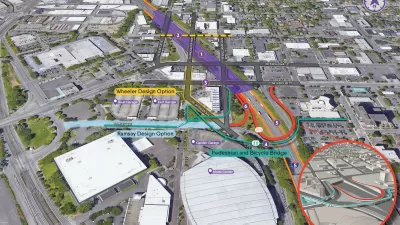The Washington Department of Transportation expanded part of I-5 in hopes of reducing a common traffic bottleneck.

“Drivers on Interstate 5 will endure less weaving and fewer waves of brake lights entering downtown Seattle, after the state finally widened the original northbound two-lane mainline to three lanes at Seneca Street,” reports Mike Lindblom for The Seattle Times.
The Washington State Department of Transportation (WSDOT) opened the project, in the works since 2007, “without fanfare” last weekend. “There wasn’t much hype because some features aren’t finished yet, spokesperson Amy Moreno said.”
According to the article, “Some drivers could find longer delays, because ramp-metering lights will operate in the collector-distributor lanes, where traffic from Interstate 90 merges into I-5 right of the mainline, as well as metering from the Cherry Street onramp.” Lindblom also points to the possibility of induced demand encouraging more drivers to take the new lane. “WSDOT doesn’t have any recent modeling or traffic predictions available for this long-developing project,” Lindblom notes.
FULL STORY: Seattle’s I-5 squeeze finally not so tight as new lane opens

Alabama: Trump Terminates Settlements for Black Communities Harmed By Raw Sewage
Trump deemed the landmark civil rights agreement “illegal DEI and environmental justice policy.”

Study: Maui’s Plan to Convert Vacation Rentals to Long-Term Housing Could Cause Nearly $1 Billion Economic Loss
The plan would reduce visitor accommodation by 25% resulting in 1,900 jobs lost.

Why Should We Subsidize Public Transportation?
Many public transit agencies face financial stress due to rising costs, declining fare revenue, and declining subsidies. Transit advocates must provide a strong business case for increasing public transit funding.

Paris Bike Boom Leads to Steep Drop in Air Pollution
The French city’s air quality has improved dramatically in the past 20 years, coinciding with a growth in cycling.

Why Housing Costs More to Build in California Than in Texas
Hard costs like labor and materials combined with ‘soft’ costs such as permitting make building in the San Francisco Bay Area almost three times as costly as in Texas cities.

San Diego County Sees a Rise in Urban Coyotes
San Diego County experiences a rise in urban coyotes, as sightings become prevalent throughout its urban neighbourhoods and surrounding areas.
Urban Design for Planners 1: Software Tools
This six-course series explores essential urban design concepts using open source software and equips planners with the tools they need to participate fully in the urban design process.
Planning for Universal Design
Learn the tools for implementing Universal Design in planning regulations.
Smith Gee Studio
Alamo Area Metropolitan Planning Organization
City of Santa Clarita
Institute for Housing and Urban Development Studies (IHS)
City of Grandview
Harvard GSD Executive Education
Toledo-Lucas County Plan Commissions
Salt Lake City
NYU Wagner Graduate School of Public Service





























